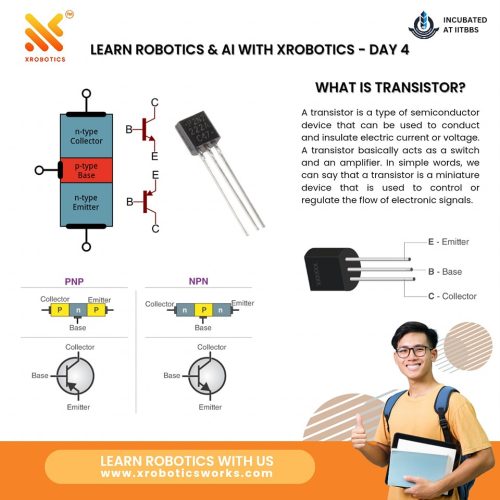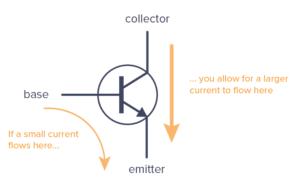Transistors: The Building Blocks of Modern Electronics

Transistors are everywhere—in your smartphone, your computer, your car, and even your washing machine. As one of the most important inventions of the 20th century, the transistor is the fundamental building block of all modern electronic devices. But what exactly is a transistor, how does it work, and why is it so crucial to the technology we use every day? Let’s dive into the fascinating world of transistors.

What is a Transistor?
A transistor is a semiconductor device used to amplify or switch electronic signals and electrical power. Think of it as an electronic switch that can turn a signal on or off, or amplify a weak signal into a stronger one. Transistors are made from semiconductor materials, like silicon or germanium, which can conduct electricity under certain conditions, allowing them to control the flow of current in a circuit.
Transistors come in various shapes and sizes, but they all have three essential parts:
- Emitter: The region that emits (releases) carriers (electrons or holes).
- Base: The middle, thin region that controls the flow of carriers.
- Collector: The region that collects the carriers from the emitter.
How Does a Transistor Work?

To understand how a transistor works, it’s helpful to think of it as a valve for electricity. When a small current or voltage is applied to the base, it controls a larger current flowing from the collector to the emitter. This property allows a transistor to act as an amplifier—boosting the strength of a signal—or as a switch—turning a current on or off.
There are two main types of transistors:
Bipolar Junction Transistor (BJT): In a BJT, the current flows between the collector and emitter, controlled by the base current. BJTs are classified into two types: NPN and PNP, which refer to the arrangement of semiconductor materials used. NPN transistors are more common and are used in digital circuits, while PNP transistors are typically used in analog circuits.
Field-Effect Transistor (FET): In a FET, the current flows between the source and drain, controlled by the voltage applied to the gate. FETs come in two types: Junction Field-Effect Transistors (JFETs) and Metal-Oxide-Semiconductor Field-Effect Transistors (MOSFETs). MOSFETs are widely used in digital and analog circuits, particularly for their high-speed switching capabilities.
Why Are Transistors Important?
Transistors are crucial for several reasons:
Miniaturization: The invention of the transistor made it possible to create smaller, more compact electronic devices. Before transistors, electronic circuits relied on bulky vacuum tubes that consumed a lot of power and were prone to frequent failure. Transistors paved the way for miniaturization, enabling the development of portable electronics and personal computers.
Efficiency and Reliability: Transistors are much more efficient than vacuum tubes, consuming less power and generating less heat. They are also more reliable and durable, which extends the life of electronic devices.
Versatility: Transistors can function as amplifiers or switches, which makes them incredibly versatile. In audio equipment, they amplify weak signals to drive speakers. In digital circuits, they act as switches to perform logical operations, which form the basis of all computing.
Speed: Transistors can switch on and off billions of times per second, enabling high-speed processing in modern computers and other digital devices. This speed is essential for everything from executing complex algorithms to rendering graphics in real-time.
Types of Transistors and Their Applications
Transistors come in many different forms, each suited to specific applications:
- Small Signal Transistors: Used in low-power applications, such as amplifying audio signals in radios or hearing aids.
- Power Transistors: Used to control large amounts of power, such as in power supplies, motor controllers, and audio amplifiers.
- RF Transistors: Specialized for high-frequency signals, used in radio transmitters, communication devices, and radar systems.
- Digital Transistors: Built into integrated circuits, these transistors are used for switching operations in computers, microcontrollers, and logic gates.
Practical Example: Transistors in Computers
Consider the example of a computer processor, or CPU. The CPU is essentially a massive collection of billions of microscopic transistors working together to perform calculations and execute instructions. Each transistor functions as a tiny switch that controls the flow of electricity through the circuit, representing the binary states of 0 and 1. By rapidly switching on and off, these transistors perform the complex mathematical operations that allow your computer to run programs, play games, and browse the internet.
The Evolution of Transistors: Moore's Law
In 1965, Gordon Moore, co-founder of Intel, predicted that the number of transistors on a microchip would double approximately every two years, while the cost per transistor would decrease. This prediction, known as Moore’s Law, has held true for several decades and has driven the exponential growth in computing power and the miniaturization of electronic devices. Although there are physical limits to how small transistors can get, ongoing innovations in materials science and manufacturing are pushing the boundaries of Moore’s Law further.
